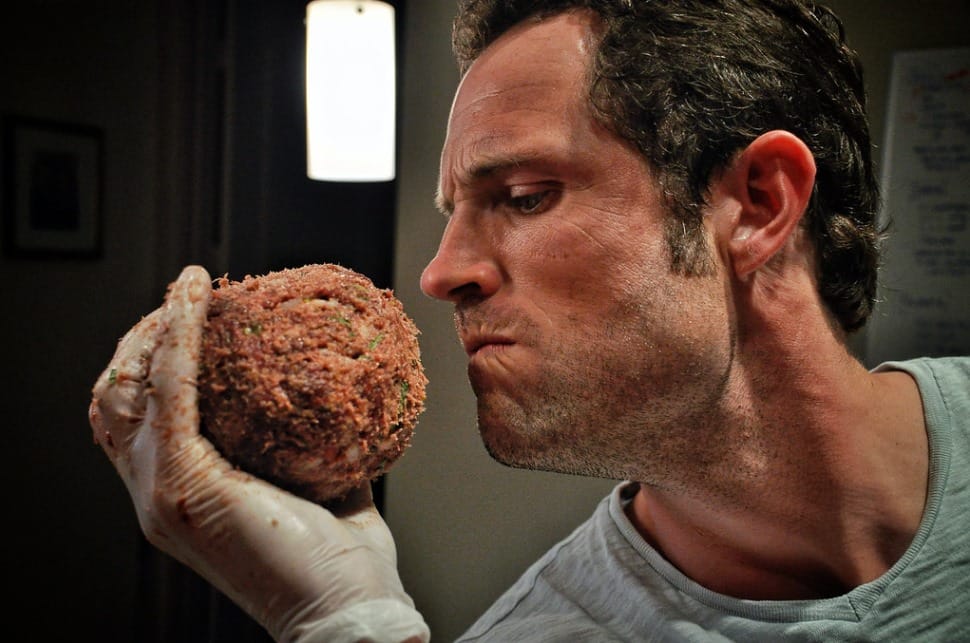What Would a Giant Meatball Made of All Humanity Actually Look Like? This Mathematician Did the Math
When most people ponder the collective weight of humanity, they might think about environmental impact or resource consumption. But mathematician Randall Munroe took a decidedly more unusual approach: he calculated exactly what would happen if you ground up every human on Earth and formed them into one massive meatball.
The results are both fascinating and surprisingly digestible.
The Macabre Mathematics Behind Human Meat
Munroe, creator of the popular webcomic xkcd and author of "What If?", tackled this bizarre thought experiment with characteristic scientific rigor. Using the average human body mass of approximately 62 kilograms (137 pounds) and multiplying by Earth's current population of roughly 8 billion people, he arrived at a total human biomass of about 496 billion kilograms.
But weight is just the beginning. The real challenge lay in determining the volume and density of this hypothetical human sphere.
From Flesh to Sphere: The Density Dilemma
The human body isn't uniform in density. Bones are denser than muscle, muscle denser than fat, and fat denser than lungs filled with air. Munroe calculated that the average human body density is approximately 1,062 kg/m³ – slightly denser than water due to our bone content.
Using this density, the total volume of humanity would be roughly 467 million cubic meters. When formed into a perfect sphere, this creates a meatball with a radius of about 482 meters – roughly half a kilometer across.
Putting the Giant Meatball in Perspective
To truly grasp the scale of this human sphere, consider these comparisons:
Height: At 964 meters in diameter, the meatball would be:
- Taller than the Burj Khalifa (828 meters)
- Nearly as tall as the proposed Jeddah Tower (1,000 meters)
- Roughly the height of 3.5 Eiffel Towers stacked on top of each other
Volume: The sphere would contain enough material to fill:
- About 187 Olympic-sized swimming pools
- The entire Great Pyramid of Giza nearly twice over
- A cube measuring 775 meters on each side
The Physics of Our Collective Mass
Beyond the sheer size, Munroe explored what would happen to such a massive concentration of biological matter. The sphere would generate its own gravitational field, though relatively weak compared to planetary bodies. An average person standing on its surface would experience gravity about 1/100th as strong as Earth's.
More concerning would be the rapid decomposition. Without preservation, the outer layers would begin rotting immediately, while the inner core might remain relatively intact due to the anaerobic environment and pressure from the surrounding mass.
Why This Matters Beyond Morbid Curiosity
While seemingly macabre, this calculation serves several educational purposes:
Scale Awareness: It demonstrates just how small humanity is in cosmic terms. Despite our global impact, our entire species would form a structure smaller than many mountains.
Mathematical Literacy: The problem showcases real-world applications of geometry, density calculations, and scientific estimation – skills crucial for understanding everything from urban planning to space exploration.
Perspective on Resources: Understanding our collective mass helps contextualize discussions about resource consumption, waste production, and environmental impact.
The Broader Context of Thought Experiments
Munroe's meatball calculation joins a long tradition of thought experiments designed to make abstract concepts concrete. From Fermi's estimation of piano tuners in Chicago to Einstein's elevator thought experiments, these mental exercises help us understand complex systems through familiar analogies.
Conclusion: More Than Just Meat and Mathematics
While you'll hopefully never need to know the exact dimensions of a human meatball, this calculation demonstrates the power of mathematical thinking to illuminate surprising truths about our world. The fact that all of humanity could fit into a sphere less than a kilometer across puts our individual significance – and our collective responsibility – into stark perspective.
Whether you're a student learning about density and volume, a science communicator looking for engaging examples, or simply someone who appreciates the intersection of mathematics and morbid curiosity, Munroe's giant meatball serves as a reminder that sometimes the most unusual questions lead to the most enlightening answers.
